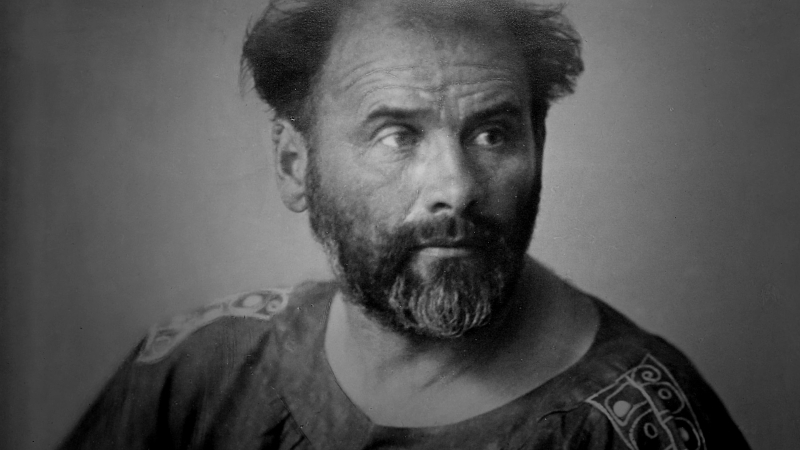Director – Ali Ray – 2023 – UK – Cert. 12a – 90m
*****
A look at one of the world’s favourite paintings, housed in Vienna’s Belvedere Museum, and the wider body of work of the artist who created it – out in UK cinemas on Monday, October 30th for one day only
All lovers of art have their blind spots. That’s partly why we go to exhibitions, to fill in the gaps in our knowledge. Gustav Klimt’s The Kiss is one of those images everyone knows, since it’s been widely reproduced as prints, while movie buffs know it from the opening museum sequence of Bad Timing (Nicolas Roeg, 1980) and as a major influence on the visuals of The Thief And The Cobbler (Richard Williams, 1993). Beyond that, however, my knowledge of both Klimt and the painting itself are sparse. This latest entry in producer Phil Grabsky’s excellent Exhibition On Screen series about art is therefore most welcome since it proves highly informative about both.
Accompanied by a perfectly judged piano score of sequences of notes rising and falling, it opens on out of focus images of gold surfaces before showing us a detail of the two heads in the painting viewed not, as you might expect, straight on, but from a side angle. As if this isn’t enough to pull you in, a vox pop of cultural historian and author Gavin Plumley has him describe the picture as “a little bit creepy”. And there’s a throwaway shot of a couple observed kissing in what I presume to be the grounds of Vienna’s Belvedere Museum, where The Kiss and various other Klimt paintings are housed. A throwaway, but it fits perfectly.
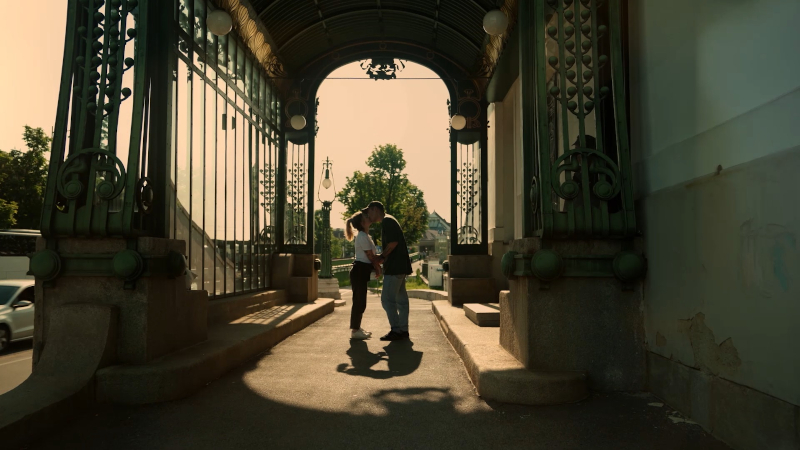
The Kiss was painted by Klimt between 1907 and 1909 and according to University of Glasgow art history lecturer Dr. Sabine Weiber is not an easy painting to decipher. When you stand in front of it, it’s overwhelming: you can’t simply take everything in it in all at once. Its two protagonists, one male, one female, are poised in their embrace, as curator of Vienna’s Leopold Museum Dr. Ivan Ristić points out, on the edge of an abyss.
Its curator Dr. Franz Smola notes that the Belvedere housed The Kiss from the painting’s first exhibition and that Klimt is Vienna’s best known painter. He was something of an anti-social recluse, who lived at home with his mother and sisters, but as his local fame grew was sort out as a portrait painter by rich, often Jewish, society women.

According to Oxford University cultural historian Dr. Janina Ramirez, The Kiss could only have been made when it was, where it was and by whom it was: it belongs to a very specific time, turn of the century Vienna prior to World War One, a time, according to Belvedere curator Mag. Stephanie Auer, of unmatched cultural flowering, underscored by an all-too brief if evocative excerpt of colourised archive film of the city at that period. Plumley points out that it was the period when cracks were beginning to appear in Vienna’s sumptuous veneer – alongside the wealthy from whom Klimt derived a considerable living, were workers struggling to exist on meagre incomes as well as Anti-Semitism rearing its ugly head (an element which, alas, links the period to our own present time, such sentiments currently being on the rise following Israel’s 2023 incursion into Gaza).
Gustav was raised at a time of economic crisis, says, Mag. Sandra Tretter, deputy director of Klimt Foundation, Vienna. His father, a simple engraver, lost a fortune as he struggled to make ends meet and raise a family. Gustav was accepted at the School of Applied Arts, where the underlying ethos was all about asking, how could art better society? – a sentiment which manifested itself in England in the likes of John Ruskin and his pupil William Morris, founder of the Arts and Crafts Movement. Gustav Klimt was one of three artists who worked on commissions for public buildings on the Ringstrasse (lit. the Ring Road), built on the site of the former medieval city wall (which looked stylistically to this writer a lot like the work of the English Post-Raphaelite artist Burne-Jones).
But then, according to Smola, something changed. The artist became The Klimt Who Offends, going beyond the limits of ‘good taste’, rejecting the widely accepted Academy style in favour of Jugendstil (‘the style of youth’), Vienna’s own Art Nouveau movement to compliment what was happening in Paris. 1987 had been the time of the birth of Modernism: Klimt was part of Viennese art movement The Secession, contemporaneous with the Arts and Crafts Movement in Britain and Impressionism in France. Vienna saw architect Joseph Maria Olbrich’s realise his Secession Building, a temple to the arts adorned with the movement’s motto, “To each age its art – and to art its freedom.”
The Secession held exhibitions, its most famous being the Beethoven exhibit of 1902 centred around a sculpture of the composer by Max Klinger. Klimt contributed a frieze in three upper walls of a vast hall – a painting of Beethoven’s 9th Symphony, a radical work since it was the first to employ poetry within that musical form.
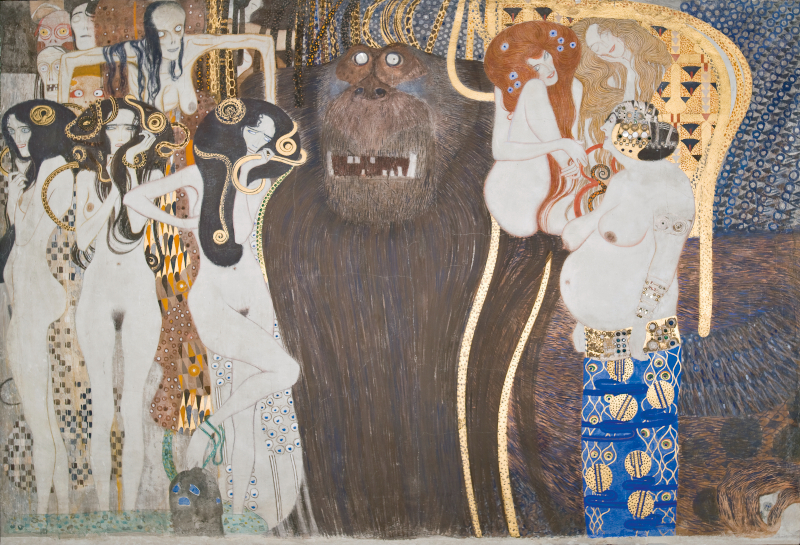
Klimt drew his inspiration from numerous sources – mythology, medieval art, Eastern European church icons, golden lacquer Japanese works, and metal leaf processes. He looked at many artists, and drew heavily on the likes of Toulouse-Lautrec, Van Gogh, Rodin and Matisse (the film cites Matisse’s The Girl With Green Eyes, 1908) as well as Byzantine Art. There was an avant-garde influence. Other artists Klimt admired and imitated included John Singer Sargent, James McNeill Whistler, Jan Toorop (The Three Brides, 1892-3) and Margaret Macdonald Mackintosh (Embroidered Panels, 1902-4). The Mackintoshes (Margaret and spouse Charles Rennie) frequently exhibited in Vienna. Klimt came late to Impressionism, only being exposed to it from about 1890 onwards.
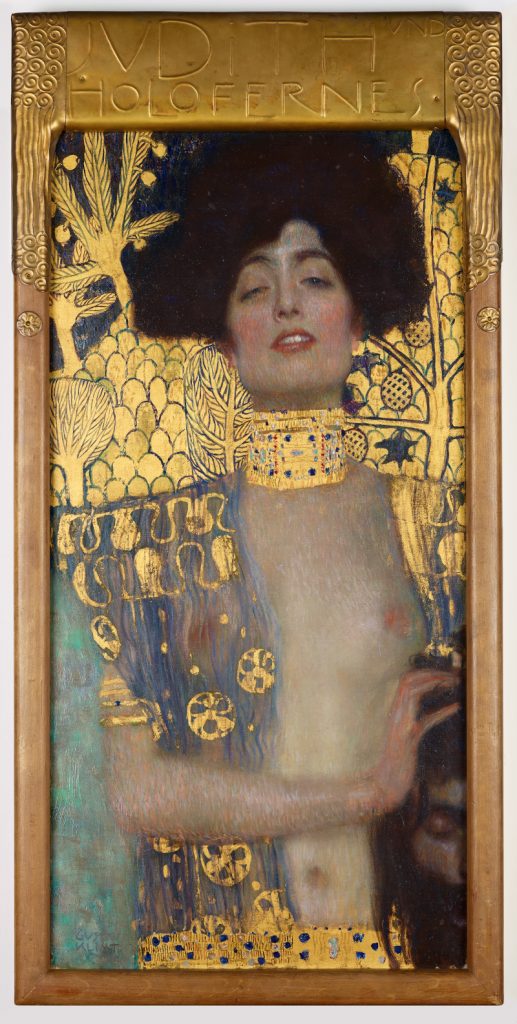
Klimt made much use of gold in his paintings, for example in Judith (1901). In The Kiss, the figure of the man is adorned with square, metal shapes suggesting rationailty while the woman is draped in organic and floral forms suggesting closeness to nature.
The two figures in The Kiss are apparently based on Klimt himself and his life partner Emilie Flöge, a go-ahead fashion designer he met when he was 29 and she 17.
Klimt employed many working class women as models, with whom he had sex and a number of children, something which he also did with a number of the society ladies he painted. His house ha two different entrance doors for each group. The film lists a number of them by name.
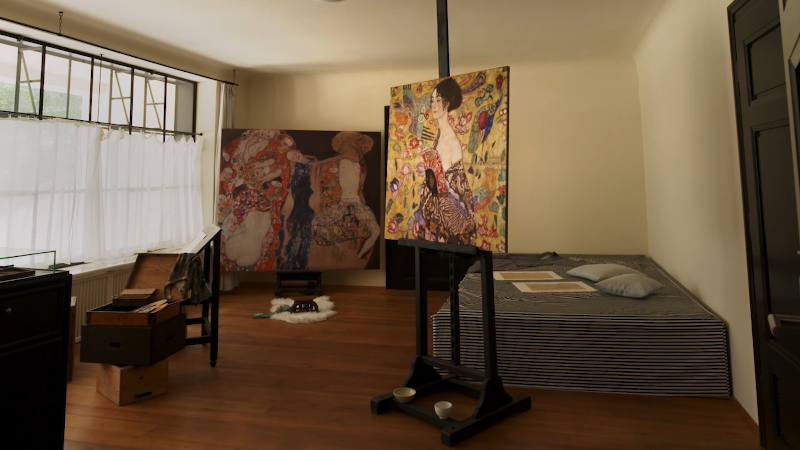
In his paintings, he subjected the women to his stylistic will, focusing increasingly on the painting surface. There exist numerous drawings of very young women, and hundreds of drawings of naked or partially clad women, some engaging in sex acts (despite the fact that, at this time, lesbianism was a punishable offence in Vienna). Klimt was accused of making porn throughout his career.
This is a highly informative portrait of a remarkable artist. Recommended.
Klimt & The Kiss is out in cinemas in the UK on Monday, October 30th for one day only. Find a screening near you: https://events.seventh-art.com/find-a-screening/
Trailer:
